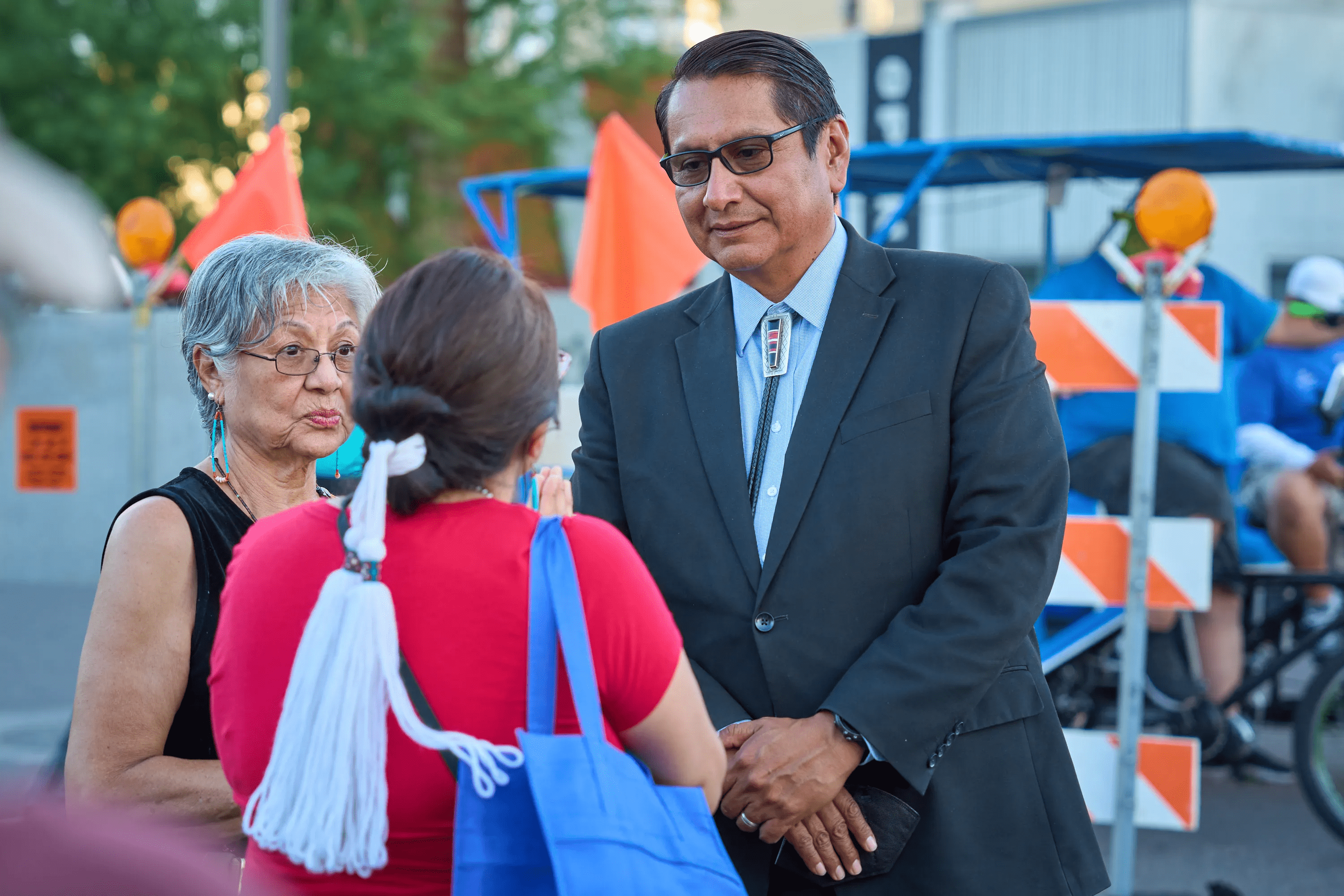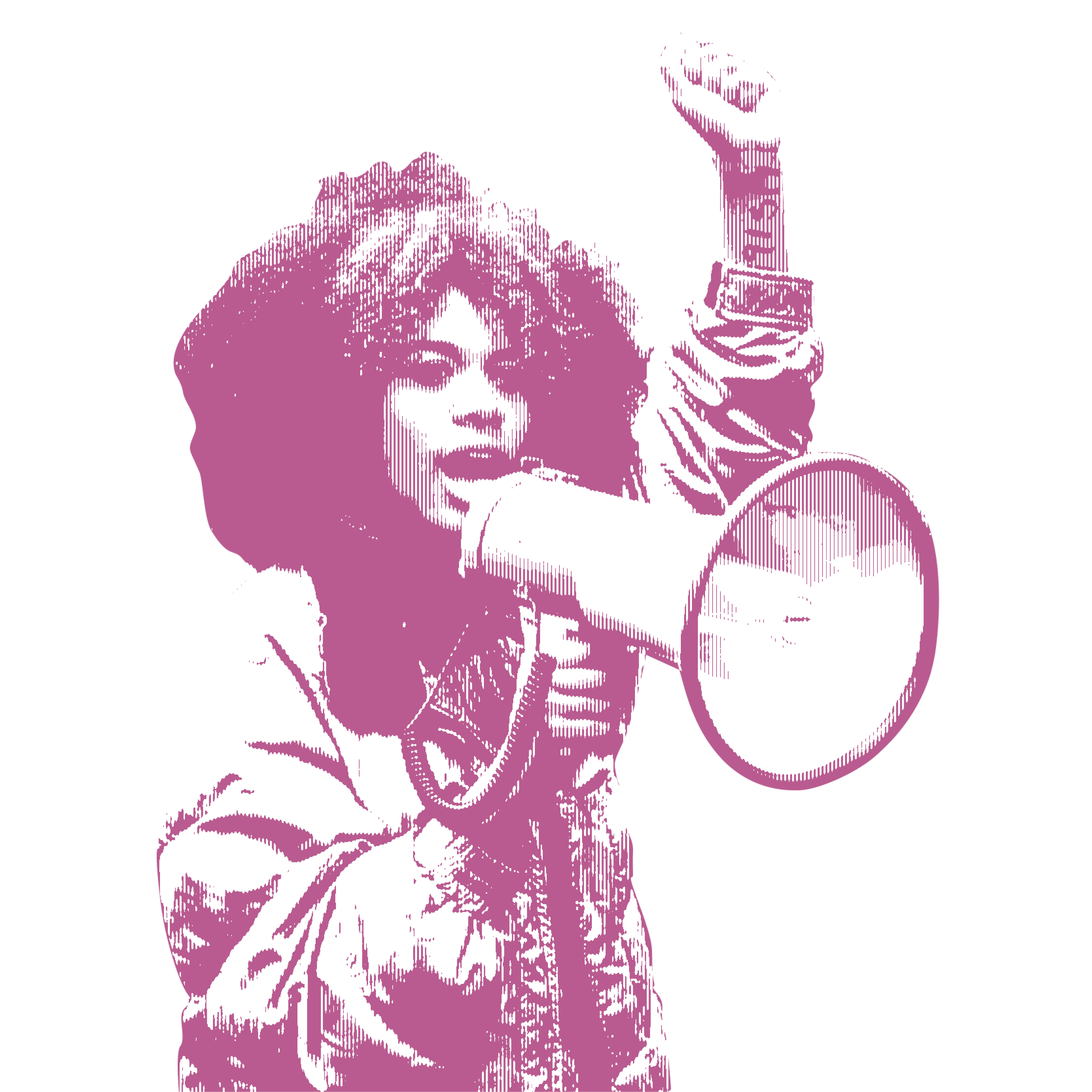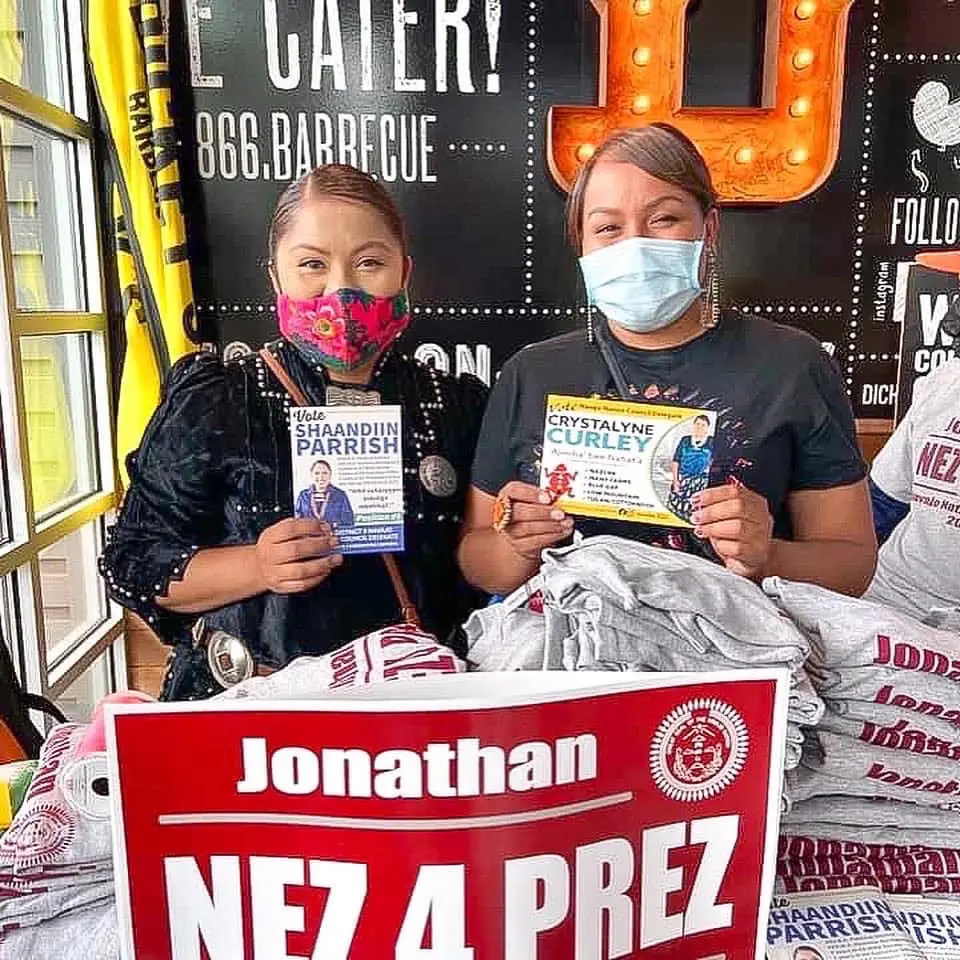
Nine women were elected to serve on the Navajo Nation Council last month, along with the first female vice president, giving women a stronger voice in tribal leadership.
With 24 Navajo Nation Council delegates serving as the lawmaking body of the Navajo Nation government, more than one-third will be women. That is important, observers say, because the Navajo tribal government is known to be a government where men are in charge, even though the tribe itself is a matriarchal one.
“I think it's certainly significant, but what the significance is remains to be seen,” said Jennifer Nez Denetdale, professor of American studies at the University of New Mexico. “When we declare our optimism that there is a woman in the top position of the government, and there are now nine council members, this is unprecedented. When you think about it and why people think it's victorious, what does it mean in terms of what we attribute to women’s qualities and what we think women’s leadership qualities are.”
Denetdale has touched on the topic of Navajo women leadership in an academic paper she wrote in 2006 titled, "Chairmen, Presidents, and Princesses: The Navajo Nation, Gender, and the Politics of Tradition." In it, she discusses “the intersection of the Navajo Nation and the intersection of gender by considering women’s presence in the governmental structure.”
“On one hand, you have people who have traditional knowledge who think about gender as complimentary,” Denetdale said. “And that women do have a place of autonomy and authority, and our government structure doesn’t reflect this. So, they turn to our Creation stories to talk about the significance of women’s leadership. And then you have that contoured by the installation of this government that is a hierarchy. It's not our traditional kind of government.”
Women are finding new paths to leadership
Women leaders aren’t forbidden in the Navajo government, but they have been a rarity. The women elected recently include two incumbents, two former Miss Navajos and a chapter vice president.
In her paper, Denetdale writes that although women aren’t encouraged to be leaders within the government, they are most visible when it comes to the ambassador role of Miss Navajo.
Two women who served as Miss Navajo Nation, Crystalyne Curley and Shaandiin Parrish, described their time as Miss Navajo as either a way to get them one step closer into the Navajo government or to help them decide if pursuing office was what they wanted to do. Their struggle to get into office was met with pushback from their male opponents, some community members and some family, but in the end, they came out on top.
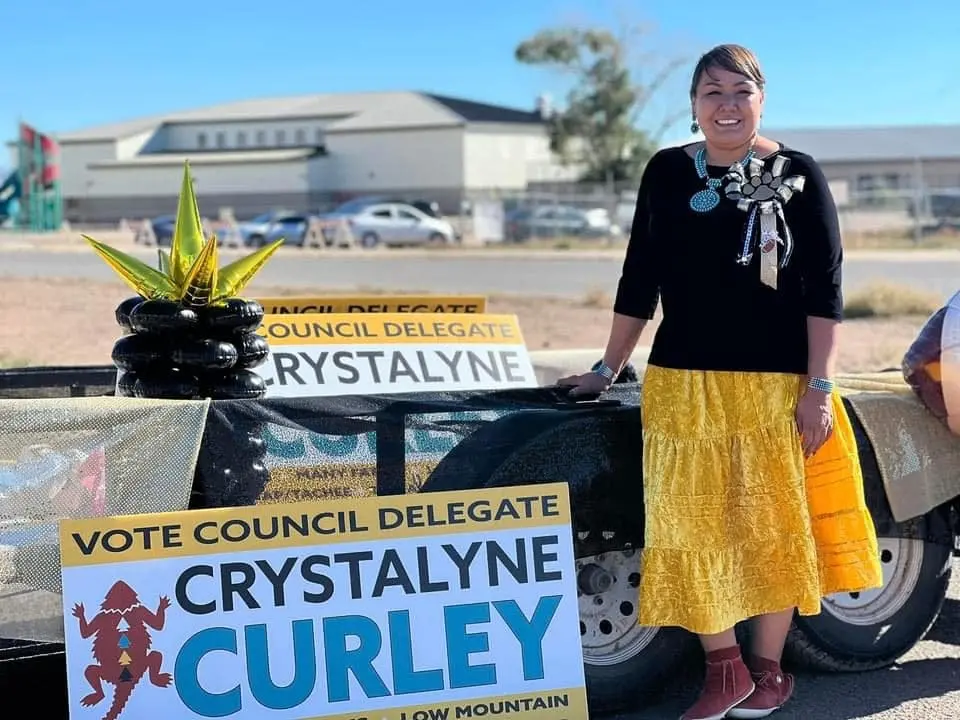
“When I was Miss Navajo that was when I really started to know how everything works and advocating for my own office,” said Curley, who is currently the Navajo Nation President’s Office senior public information officer. Before that, she worked with the Navajo Nation Council’s office. “That’s how I started to learn the processes and challenges, not only here but throughout the Navajo Nation. My main focus is going to be infrastructure development in rural communities out there.”
This was the second time Curley, who was Miss Navajo in 2011, had run for the council, the first being eight years ago. Unlike her first bid, this was a close race, so close that her opponent had a recount done. But in the end, and with an even closer margin, Curley became the first woman council delegate elected to represent her communities of Tachee/Blue Gap, Many Farms, Nazlini, Tselani/Cottonwood and Low Mountain. Her opponent was an incumbent running for his fourth term and this was Curley’s second time going up against him.
“I was still young then,” Curley said. “I lost but I didn't give up that vision that I need to work harder. So I invested that eight years into my work experience, pushing myself, and getting a master's. I just took it as it wasn't my time yet. Eight years later, I felt it was time and that I was ready.”
Curley is from the tiny community of Fish Point. She grew up and still for the most part lives with no running water and electricity. She hauls water, takes care of her livestock, has no cell service and deals with unpaved roads, which many across the reservation deal with every day. She believes that resonated with the voters who want those issues addressed.
“No matter where you go on the Navajo Nation, people deal with the same struggles and obstacles,” said Curley, who received her master's degree in public administration at the University of New Mexico.
Serving as Miss Navajo 'lit the fire under me'
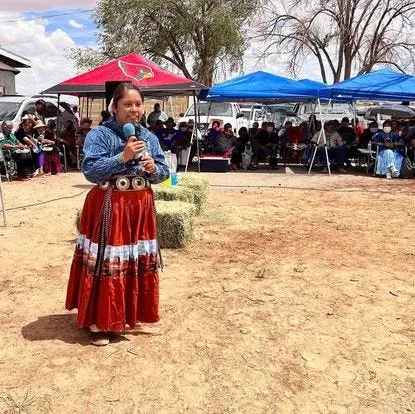
Curley isn’t the only former Miss Navajo to be elected to the incoming 25th Navajo Nation Council. Parrish, who spent the first two years of the pandemic as Miss Navajo, was elected to represent the communities of Kayenta, Chilchinbeto and Deenehotso.
Although Miss Navajo is there as an ambassador for the Navajo Nation, it’s only a one-year title, with the exception of Parrish, who agreed to hold the title an extra year due to COVID-19. The title allows for women to work with communities, but it doesn’t carry the policy impact to help and make changes for communities, as a delegate can do.
Parrish had also gone up against an incumbent, who was seeking a third term, but unlike Curley, she won by a larger margin. As Miss Navajo, Parrish became known throughout the country as the Miss Navajo who was out in the communities distributing personal protective equipment and supplies along with Navajo Nation President Jonathan Nez during the first two years of the pandemic.
It was her time as Miss Navajo that solidified her decision to run for the council. She worked with Nez, his directors, the Navajo Nation Office of the Controller and the Navajo Nation Washington Office, who worked to get the information and data needed to advocate for the tribe to receive a good size amount of American Rescue Plan Act funding. Because of Nez and his team's preparation and advocacy for the money, the Navajo Nation was able to receive the largest sum of any tribe — $2 billion — in ARPA funding.
Upon receiving the money, meetings between Nez and the chapters across Navajo took place to gather information on what chapters and communities were in need of and how the ARPA funding could be used. During these meetings, Nez encouraged Parrish to take part.
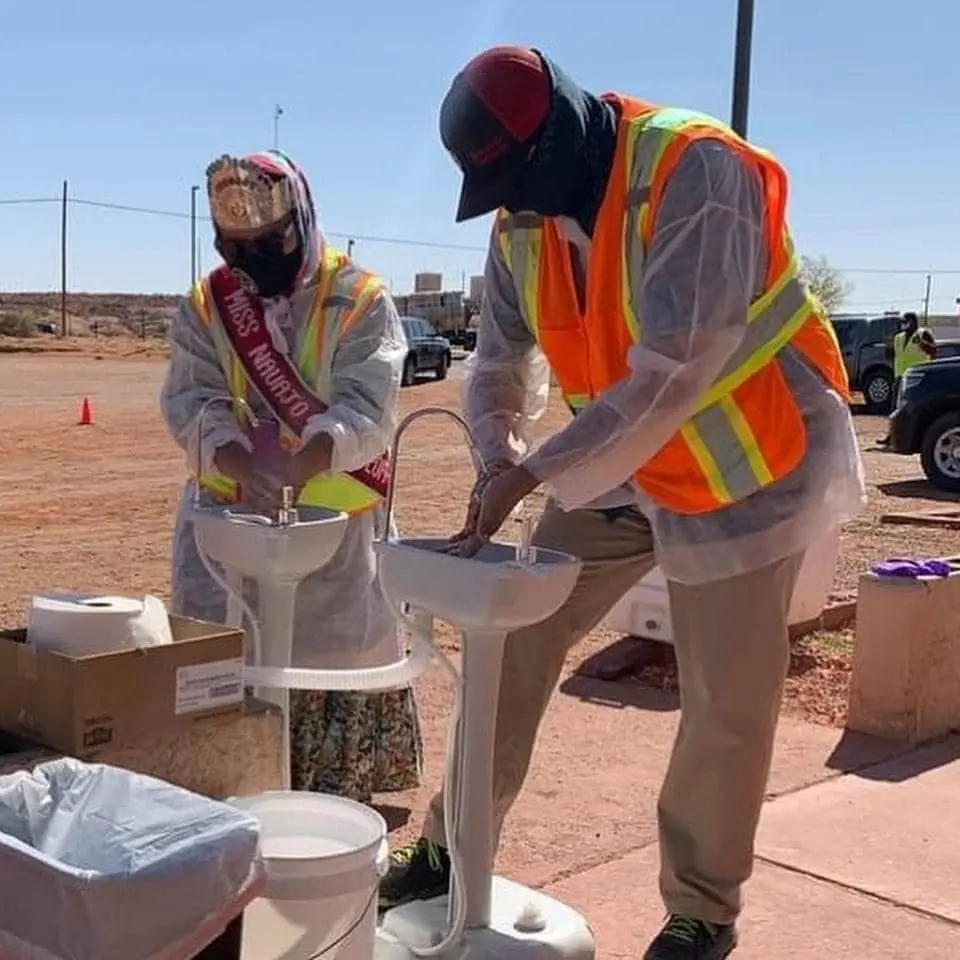
“The first time we went to 110 chapters was to distribute the PPE and food,” Parrish said. “But the second time we went around was to discuss ARPA funding. And President Nez allowed me to be a part and listen to these meetings. Allowing me to be there and listen to conversation made me realize how the council delegate position was crucial to identifying the resources for the chapter houses.”
During the meeting with her chapter at that time, Parrish saw and heard from chapter officials about how more advocacy for the chapters was needed but not happening. Parrish has also worked for Arizona Treasurer Kimberly Yee as her public information officer and, in 2021, was appointed as the marketing coordinator for the Arizona 529 plan, Arizona’s Education Savings Plan.
“Being Miss Navajo lit the fire under me,” said Parrish, who recently received her master's degree in management at W.P. Carey School of Business at Arizona State University. “While I was Miss Navajo, I identified the issues I wanted to help solve that inspired my education. When I decided to run for council I knew I had the education that I needed to help the chapters.”
More women on the council open the door to new issues
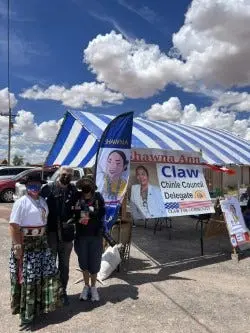
Of all the 110 chapters, only three of them have their own delegates while the rest are divided up among delegates. Since Chinle is one of the largest chapters in the Navajo Nation, it has its own delegate, and Shawna Claw made history by becoming the first woman council delegate from the chapter. She had served as Chinle Chapter’s vice president.
“There is a sense of pride knowing the community came together to select a woman to serve as their council delegate,” Claw said. “The people of the Navajo Nation want transparency and change. The community is a beautiful, diverse mix of families, beliefs and ideals.”
Claw’s educational background consists of business, psychology and social science, and she also comes from a family of community leaders. Two years into her term as chapter vice president, Claw said she saw the shortcomings in her community and the need for a strong advocate, which is why she decided to run for council delegate.
“I consider myself a politician,” Claw said. “I am a person of action. I am invested in my community, and it is home. I am connected to this beautiful place we call Diné Bi’keyah, and we are a great nation.”
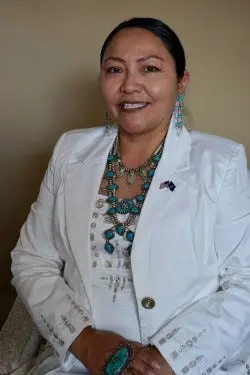
With huge support coming from her family, former students, “work family” and beyond, she said she is ready to tackle the issues and needs, such as trying to get a youth center for her large community, bringing more services for the elderly, such as hospice centers, and amending certain laws.
“The Diné people have voted and through their votes, they have selected nine women to serve as leaders within the Navajo Nation Council,” said Claw. “The shift to having more women in the council shows the need to foster healing, growth and compassion within the Navajo Nation.”
Initiatives, policy and other actions usually put at the forefront by current women leaders, such as the Murdered and Missing Diné Relatives issue, are expected to gain more attention. Denetdale wondered how these types of actions would be addressed if it was happening under women's leadership.
“One of the things that is women-centered is a network of care based on the qualities that are attributed to the feminine,” Denetdale said. “If it's gendered, it means that the qualities of that gender, which the gender is associated with, then become part of laws and policies. It shapes, in our case hopefully reshapes, our networks of the political, economic, social, family. That's the larger picture.”


